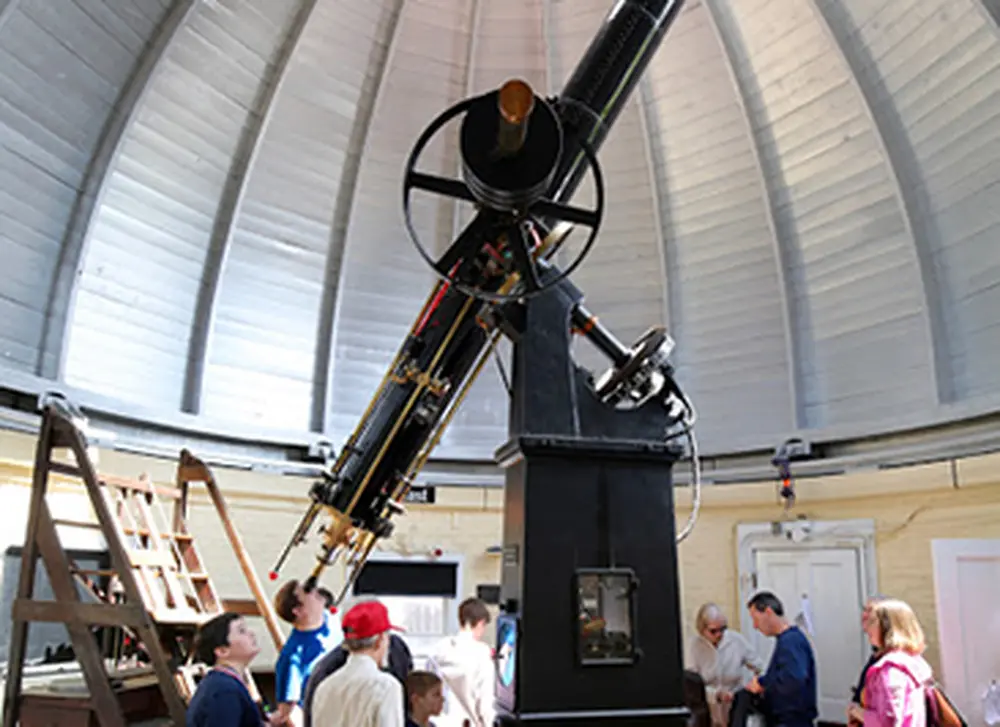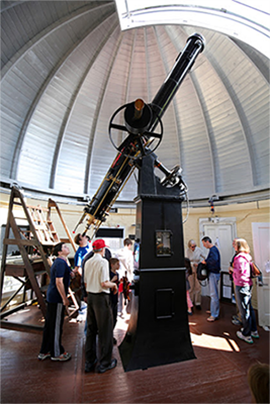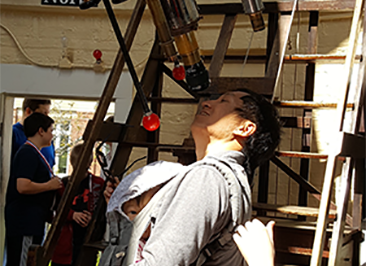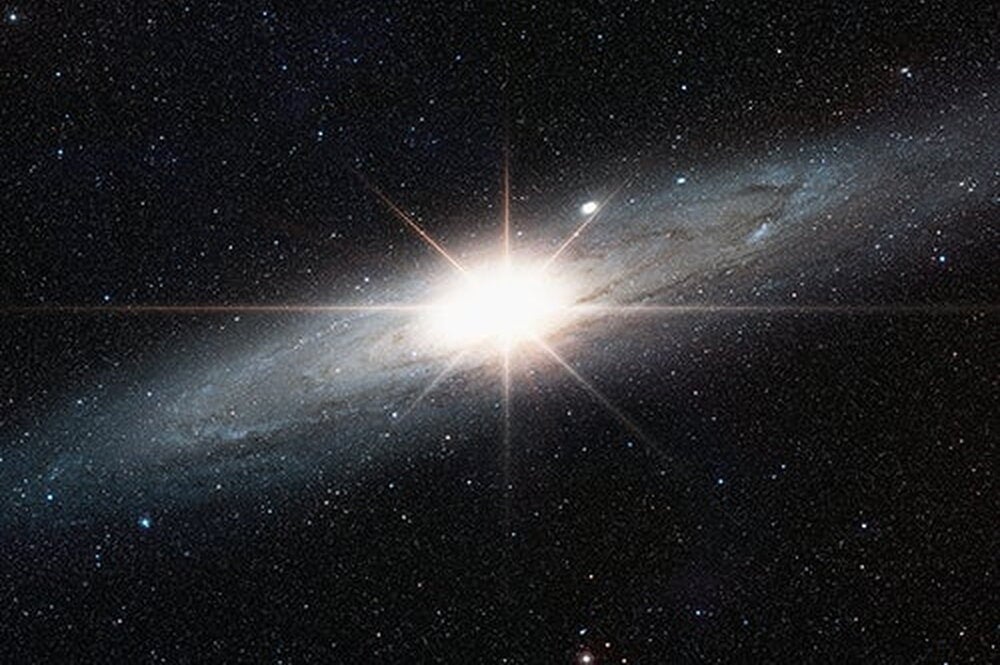

As the universe expands, perhaps it’s only natural that the Astronomy Open House does, too. For the first time organizers made the open house a full-day event, and it was a success: the Department of Astronomy estimated that some 500 people attended.
“The open house was our first ever of its kind, and exceeded our expectations in many ways,” said Brian Fields, head of the department. “We were very pleased with the turnout, but the story goes beyond the numbers—we were energized by the interest and curiosity we saw in our guests, particularly the children. And we saw unexpected benefits like our undergraduates being excited to work alongside faculty and to become teachers themselves.”
Activities included tours of the Observatory dome, astronomy talks by faculty, student-led demonstrations on the properties of light and matter (including a liquid nitrogen and balloon exhibit that proved to be a big hit), exhibits by local artists inspired by astronomy, historical displays, and tours of the modern astronomical instrumentation laboratory.
Attendees were also treated to views of the sky courtesy of the historic 12-inch Brashear refractor telescope in the Observatory dome, as well as a pair of more portable telescopes set up on the lawn outside. Visitors observed the sun (and a distinct sunspot) during the day, while at night they viewed the moon, Jupiter and its moons, and stars.
The department has been conducting open houses at the Observatory for a few years during the Friday night of Homecoming weekend, but this spring’s event, held on April 23, was the largest, and the first to go all day. Fields said they will expand this fall’s open house to mirror this event, and they plan to hold the open house again next spring.

This event was separate from the monthly Observatory open houses conducted by the University of Illinois Astronomical Society, or Astronomy Club, held the first Friday of every month (with the second Friday a backup in case of cloudy weather). The society open house and club are run mostly by students, but the event recently began including a faculty member hosting “Ask an Astronomer” to field astronomy-related questions.


